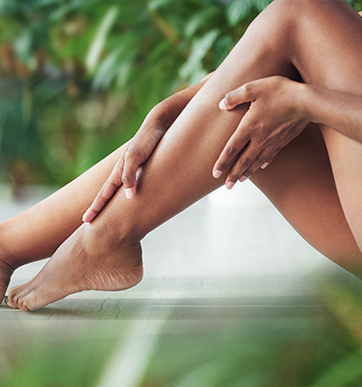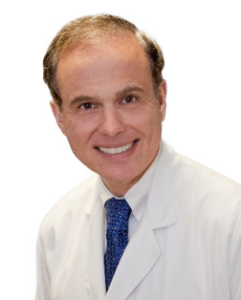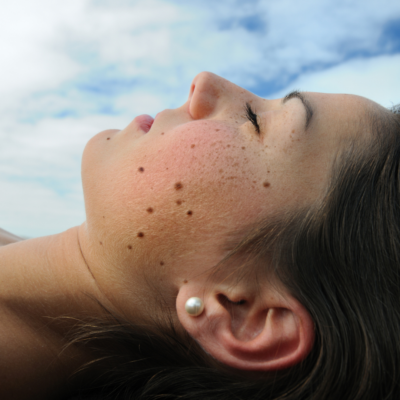
All About Varicose Veins and Spider Veins
Are you bothered by:
Unsightly leg veins? Tired, heavy legs? Swelling, pain or discomfort?
California Skin Institute board-certified dermatologist, Dr. Rick Noodleman, goes over various treatment options that can help patients struggling with varicose veins and spider veins.
About Veins
Leg veins regulate blood flow from the legs to the heart assisted by valves that open and close. Varicose veins develop when these valves malfunction, causing blood to pool. For many, enlarged varicose veins and spider veins—small, damaged veins on the surface of the legs or face—are simply cosmetic concerns. For others, varicose veins result in symptoms ranging from fatigue, aching, pain and skin ulcers.
More than half of Americans over 50 suffer from varicose veins. Women who’ve had more than 2 pregnancies are at higher risk; heredity, weight and “vertical” careers like nursing or teaching are also risk factors. New technology has virtually eliminated the need for surgery to treat varicose veins and spider veins. Non-surgical laser treatments offer quick procedures with minimal recovery time.
Spider Veins
Spider veins are small, dilated, blue-to-red capillary veins at the skin’s surface occurring in lines or branches. They’re found most commonly on the legs and around the nose. Facial spider veins are often the result of tiny blood vessels bursting due to increased pressure or sun damage. While they occasionally ache, burn or itch, they are not harmful. However, many people choose to treat them with light therapy for cosmetic reasons.
Treatment Of Spider Veins
Sclerotherapy uses a tiny needle, a solution is administered directly into the vein, irritating the lining of the vessel and causing it to close. Over time, the body absorbs the treated vein.
Varicose Veins
Varicose veins are rope-like, twisted, bulging, blue-to-red vessels under the skin of the legs. Varicose veins are not only unsightly but can result in symptoms including fatigue, pain, restless legs, heaviness, aching, itching, throbbing, swelling, burning or cramping.
Treatment Of Varicose Veins
Until the early 2000s, the only treatment option for varicose veins was vein stripping, a long recovery time procedure that oftentimes resulted in scarring. Today, next-generation bursts of energy heat and contract the vein walls. With the primary vessel sealed, the body automatically re-establishes healthier circulation and symptoms quickly diminish.
- Endovenous Laser Treatment (EVLT) is a minimally invasive in-office procedure. Almost all patients with varicose veins are good candidates. EVLT is covered by Medicare and most insurance plans. A local anesthetic numbs the treatment area, and most people feel little-to-no pain. Using ultrasound scanning, an optical fiber is inserted into the diseased vein. The laser is then activated, heating the vein and causing it to contract. Once the vein closes, it’s naturally absorbed by the body. Any blood circulating through the diseased vein is rerouted to healthy ones.
- Sclerotherapy can be used in conjunction with EVLT. The vein is injected under ultrasound guidance with a solution that closes it. EVLT—with or without sclerotherapy—takes less than an hour. Patients usually resume their normal activities the next day. Leg pain and heaviness disappear almost immediately and cosmetic changes are noticeable in a few short weeks.
Getting Started
Make an appointment for a Vein Therapy Consultation. During your visit, your board-certified dermatologist will discuss all treatment approaches with you and recommend customized options depending on the extent of the problem and your overall health, risk factors and personal preferences.
 Dr. Rick Noodleman is a board-certified dermatologist who completed his dermatology residency at Stanford and a dermatologic (Mohs) skin cancer surgery fellowship at Duke. Dr. Noodleman offers his patients vein therapy and a full range of minimally-invasive cosmetic surgery options including laser resurfacing, liposuction, lower neck lifting, blepharoplasty (eyelid rejuvenation) and scar revision. Request an appointment with Dr. Noodleman today.
Dr. Rick Noodleman is a board-certified dermatologist who completed his dermatology residency at Stanford and a dermatologic (Mohs) skin cancer surgery fellowship at Duke. Dr. Noodleman offers his patients vein therapy and a full range of minimally-invasive cosmetic surgery options including laser resurfacing, liposuction, lower neck lifting, blepharoplasty (eyelid rejuvenation) and scar revision. Request an appointment with Dr. Noodleman today.



 / 291 Reviews
/ 291 Reviews